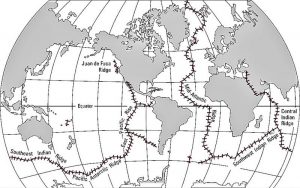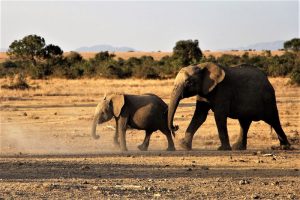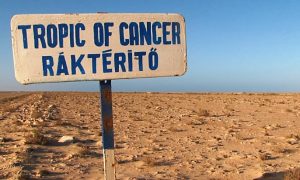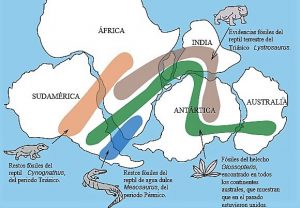Horn of Africa
The Horn of Africa is a large land extension that stands out from the eastern end of the African continent. It is located between the Indian Ocean in its eastern part and the Gulf of Aden in the north, which protrudes hundreds of kilometers into the Arabian Sea. In general, it is estimated that the Horn of Africa consists of more than 772,200 square miles, and most of them have a semi-arid to arid climate. Despite difficult living conditions in many parts of the region, recent estimations put the region's population at around 90.2 million people.
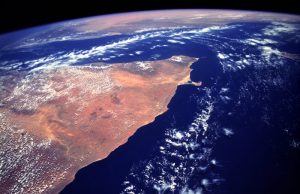
Related topics
Gulf of Aden, Arabian Sea
What is the Horn of Africa?
It is the region located in West Africa considered one of the poorest regions on the planet, where hunger is a constant threat to human life. It is believed that this was the place where humanity had its beginnings.
Location
The Horn of Africa is located in the southern part of the African continent and is one of the most unstable regions in the world. It is made up of eight different countries: Eritrea, Ethiopia, Kenya, Somalia, Sudan, Uganda, Southern Sudan and Djibouti. It is a region of interest to the European and American world powers because its location is strategic for maritime trade, for the passage of oil ships and goods.
History of the Horn of Africa
The Horn of Africa receives its name because it has a triangular shape. Its history goes back to the African state of Ethiopia, Eritrea and Yemen, which developed between the 3rd and 11th centuries. In ancient times, it was also used as a source of biological resources through expeditions that sought to exploit myrrh, incense and spices. Today, the region is considered to be in constant crisis. Despite its demographic importance, two major wars have taken place in the area, in Ethiopia and Somalia, and in Ethiopia and Eritrea.
The region is constantly affected by droughts or floods and the humanitarian crisis there is incredibly strong. Hunger and war killed approximately two million people between 1982 and 1992.
Characteristics
The most outstanding characteristics of the Horn of Africa are the following:
- It is distinguished mainly by having an arid plain and a lowland called Ethiopian Highlands, which is divided into two sections by the Rift Valley.
- Currently, the Horn contains a large amount of vegetation such as heather, grass and the small yellow flower commonly known as St. John’s wort.
- Although much of the area is semi-arid or arid, the Rift Valley has marked the landscape with a series of mountains and ridges.
- The Simien mountain range is one of the largest and most important mountain ranges we can find.
- Although many animals have made the region their home, the landscape and hostile climate combine, creating a difficult environment for the animals to thrive.
- The Horn of Africa is home to proportionally more native reptiles than any other region on the continent.
- Access to a water source is a stimulation for wildlife in the plains, as much of the Horn of Africa receives very little annual rainfall.
- In western and central Ethiopia and the southernmost region of Eritrea, annual rainfall is reinforced by heavy rainfall during the monsoon season.
Countries of the Horn of Africa
The Horn of Africa consists of the following countries: Eritrea, Ethiopia, Kenya, Somalia, Sudan, Southern Sudan, Uganda and Djibouti.
Economy
The economic crisis in the Horn of Africa is generated mainly by the consecutive droughts that affect it and that provoke the greatest food crisis that the country has experienced, generating the first hunger of the 20th century. The scarcity of food produces diseases and very little capacity to react, the difficulty of access routes and the inhabitants who try to flee, make overcrowding produce serious consequences.
Of the countries that make up the Horn of Africa, Ethiopia is the most important because of its demographic position, its economic evolution and its role as a stabilizer in the region. It is the second most populous country and the main driver of stability in the Horn of Africa. It is worth mentioning that Ethiopia has consolidated itself as one of the fastest growing economies in East Africa.
Conflicts
This region is in constant crisis. Different ethnic groups struggle for resources and space. The continuous wars that take place, produce thousands of deaths and make the country not have any kind of national government to guide them.
Among the conflicts that occurred in the colony we can mention:
- First Italian-Ethiopian War
- Dervish Resistance
- Second Italian-Ethiopian War
During the First World War there was the Horn, the East Africa Campaign; and during the Second World War there was the East Africa Campaign.
There have also been different conflicts in the modern era, for example:
- War of the Eritreans’ independence
- Ethiopian Civil War
- Ogaden War
- Djiboutian Civil War
- Ethiopian and Eritrean War
- Somali Civil War
Starvation in the Horn of Africa
The food crisis in the Horn of Africa has been classified as famine and is considered the worst since the 1960s. The United Nations declared the place on red alert, and it is known that nearly one million people have died of hunger. The lack of international aid, the nation’s security problems and conflicts make the humanitarian response and aid difficult to introduce to the place.
Drought is one of the main problems, there are places where it has not rained for about two years. This leads to loss of livestock and crops, leading to famine and disease.
Experts believe that if urgent action is not taken, famine will reach the rest of the countries that make up the Horn. Malnutrition, high prices for the few products and the intervention of rebel groups make the region fall more and more into crisis.
Piracy
This is a problem and a constant threat to international shipping and the fishing activities that take place there. Military patrols have been sent from the European Union along with the United States. From 2011 onwards, a decrease has been observed, but the problem has not been eradicated in its entirety.
How to cite this article?
Briceño V., Gabriela. (2019). Horn of Africa. Recovered on 23 February, 2024, de Euston96: https://www.euston96.com/en/horn-of-africa/



